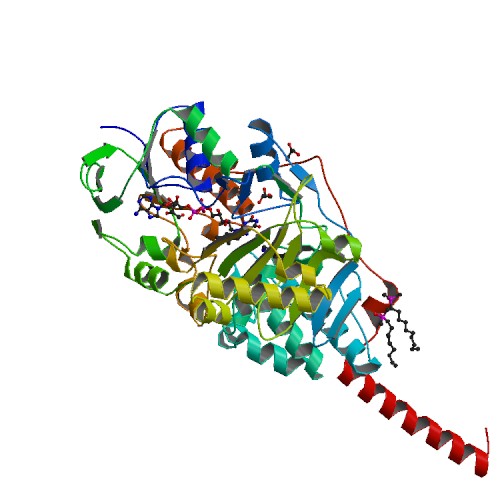
MAOAs are the most abundant isoform of Monoamine oxidases. The majority are located inside the noradrenergic neurons on the outer mitochondrial membranes. [1]
Function
The major function of this enzyme is to degrade biogenic amines. MAOAs catalyze the oxidation of serotonin, norepinephrine, and dopamine. Then hydrolyze the oxidative products to give aldehydes or ketones. [2]
Disease
MAOAs remove amino functional groups to leave an oxidized oxygen atom behind, and producing ammonia and hydrogen peroxide. The hydrogen peroxide is a major mediator in the production of hydroxyl radicals in the body. Free hydroxyl radicals in the body have detrimental effects on several organs especially the brain. MAOAs are associated with major depressive disorder and cardiovascular disease. Increased activity of this enzyme can lead to downstream dysregulations of elevation of oxidative stresses, increased platelet activity, and cytokine levels.[3]
Relevance
It is important to study MAOAs because they are so harmful to the human body. Many of these effects can be avoided with the use of monoamine oxidase A inhibitors. These inhibitors block the substrate binding sites, keeping free amines from binding and being metabolized by the MAOAs. .[4]
Structural highlights
MAOA has multiple binding flavin adenine dinucleotide (FAD)-binding domains, and multiple substrate-binding sites. A, C-terminal alpha-helical region and hydrophobic residues 17, 18, and 21 bind to the mitochondrial membrane. Aromatic and aliphatic residues make up most of the substrate-binding sites. The lysine305 residue interacts with a water molecule and binds flavin cofactors. Tyr407 tyr444 help to form an "aromatic sandwich" that help orient the substrate for activation by promoting nucleophicity. The binding site is about 400Å in size. Two residues contribute to substate selectivity and inhibitor selectivity are Ile335 and Phe208. There are three tyrosine, Tyr69,Tyr407, Tyr444, near the active sites. [5] Overall, the active site area is outlined by residues Tyr69, Tyr197, Phe208, Tyr407, Phe352, Tyr444, and the isoalloxazine ring. [6]

